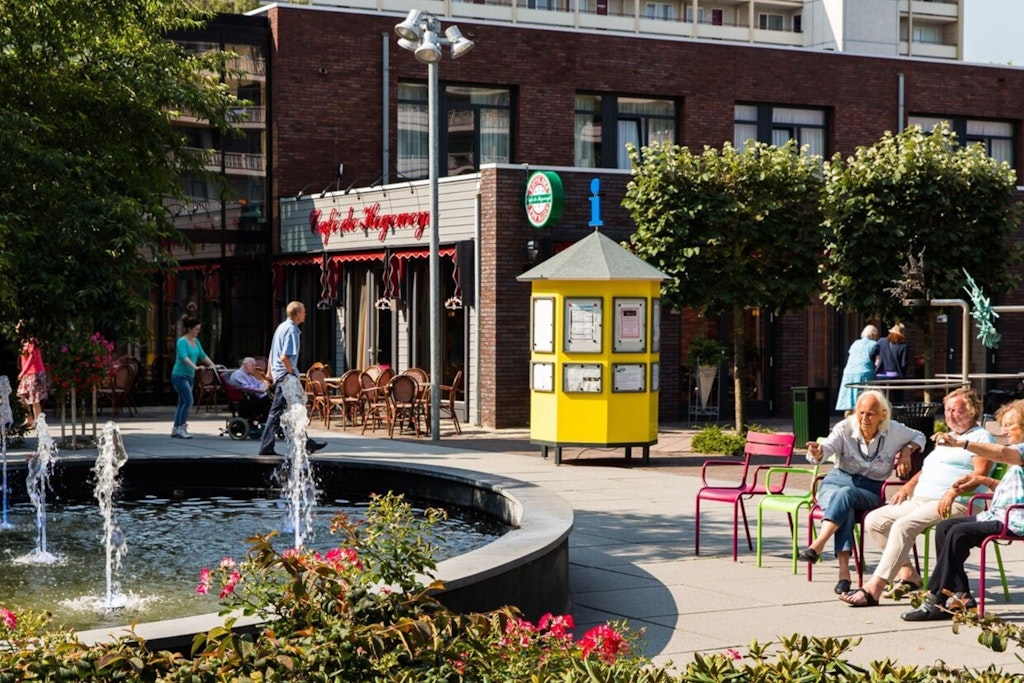Eco-friendly aged care: Lessons from global leaders in sustainable design
Published on 11 August 2025

As the aged care sector grapples with rising operational costs, regulatory pressures, and the need to enhance resident well-being, sustainability has become a strategic priority. Eco-friendly nursing homes reduce environmental impact, lower expenses, and create healthier living environments for residents.
By integrating green design principles, aged care leaders can align with global sustainability goals while improving care quality and operational efficiency. This article explores how sustainable practices are transforming nursing homes, drawing inspiration from exemplary eco-friendly facilities worldwide, and offers actionable insights for CEOs to drive greener operations.
Why sustainability matters in nursing homes
Nursing homes operate continuously, consuming significant energy for heating, cooling, lighting, and medical equipment. A 2023 study estimates that healthcare facilities, including nursing homes, contribute 5% of global greenhouse gas emissions. Sustainable design can reduce these emissions, with measures like energy-efficient systems cutting costs by up to 30%.
Beyond financial benefits, eco-friendly environments – featuring natural light, clean air, and green spaces – improve resident mental health, reduce stress, and combat loneliness, aligning with person-centered care principles. Foreign regulatory bodies, such as the UK’s Care Quality Commission, actually incorporate sustainability into inspections, urging providers to act swiftly.
Key principles of sustainable nursing homes
To create eco-friendly nursing homes, leaders can adopt the following principles:
- Energy efficiency: Use solar panels, LED lighting, and smart thermostats to minimise energy consumption.
- Sustainable materials: Incorporate reclaimed wood, bamboo, or recycled metals to reduce embodied carbon and enhance indoor air quality.
- Water conservation: Implement rainwater harvesting, greywater recycling, and low-flow fixtures to reduce water usage.
- Biophilic design: Integrate indoor gardens, living walls, and natural light to boost resident well-being.
- Waste reduction: Employ composting, recycling, and reusable products to minimise landfill waste.
These principles not only lower environmental impact but also enhance resident comfort and operational efficiency.
Global examples of eco-friendly nursing homes
The following nursing homes demonstrate how sustainable design can be applied to aged care, offering lessons for leaders worldwide:
- Mirabella Complex, Arizona, USA
The LEED-certified Mirabella complex in Arizona integrates solar panels, rainwater harvesting, and non-toxic materials to reduce its carbon footprint. Its design emphasises natural lighting and high-efficiency HVAC systems, improving air quality and resident comfort. The facility reports $7 million in savings through the ENERGY STAR program, showcasing significant cost benefits. For aged care leaders, Mirabella demonstrates how green certifications can drive financial and health outcomes. - Hogeweyk Dementia Village, Weesp, Netherlands
Hogeweyk, a pioneering dementia care village, incorporates urban farming and a car-free layout to promote sustainability and tranquility. Residents engage in on-site gardening, which supports mental well-being and provides fresh produce, reducing food-related emissions. The village’s biophilic design, with green spaces and natural ventilation, enhances resident quality of life. Aged care facilities can emulate Hogeweyk’s community-driven approach to foster social cohesion and sustainability. - Juniper Communities’ Green Canopy Initiative, USA
Juniper Communities’ Green Canopy Initiative, launched in 2001, sets a benchmark for sustainable senior living. Facilities incorporate LEED standards, energy-efficient windows, and low-flow fixtures, cutting water use by 50%. The initiative replaces single-use plastics with reusable stainless-steel utensils and implements composting and community gardens. Juniper aims to become the first zero-waste senior living community, demonstrating how holistic sustainability can enhance care quality and reduce costs. - St Monica Trust, Bristol, UK
St Monica Trust has committed to PlanetMark Business Certification, measuring carbon emissions to achieve Net Zero by 2040. The facility uses LED lighting, concentrated eco-friendly cleaning products, and launderable products like mop heads and bed pads to reduce waste. Community fridges repurpose unserved food, minimizing landfill waste. For aged care leaders, St Monica Trust highlights how incremental changes can align with regulatory goals and improve resident satisfaction. - Green House Homes, Various Locations (US & Australia)
The Green House model, operating in 35 states and Australia, offers small, home-like nursing homes with sustainable features. These facilities use energy-efficient appliances, natural lighting, and on-site gardens to reduce environmental impact. A 2016 study found Green Houses reduce Medicare costs and hospital readmissions, with 82% operating as non-profits. Their focus on resident autonomy and community gardening offers a scalable model for eco-friendly aged care.
Global lessons for nursing homes
These examples provide actionable insights for aged care leaders:
- Cost efficiency: Mirabella and Juniper demonstrate how energy-efficient systems and green certifications can yield significant savings, with Mirabella saving $7 million and Juniper cutting paper use by 850,000 pages in six months.
- Resident well-being: Hogeweyk and Green House Homes show how biophilic design and gardening improve mental health and social engagement, reducing dementia and loneliness risks.
- Regulatory alignment: St Monica Trust’s Net Zero strategy aligns with NHS requirements for carbon reduction plans, offering a model for compliance.
- Scalability: The Green House model’s presence in 35 states and Australia highlights how sustainable practices can be adapted across diverse regions.
Strategic steps for aged care leaders
To implement sustainable practices, CEOs can:
- Audit energy and waste: Assess current usage to identify inefficiencies, such as excessive water or single-use plastics, as seen in Juniper’s initiatives.
- Invest in green infrastructure: Retrofit facilities with solar panels, low-flow fixtures, or LED lighting, following Mirabella’s lead.
- Engage residents and staff: Foster a sustainability culture through gardening or recycling programs, as in Hogeweyk and Green House Homes.
- Partner with experts: Collaborate with sustainability consultants, as St Monica Trust did with PlanetMark, to develop Net Zero strategies.
- Leverage incentives: Pursue tax credits or grants, like the U.S. Inflation Reduction Act’s $3,200 energy improvement credits, to offset costs.
A green future
Eco-friendly nursing homes like Mirabella, Hogeweyk, Juniper Communities, St Monica Trust, and Green House Homes illustrate that sustainability enhances resident well-being, reduces costs, and meets regulatory demands.
By adopting energy-efficient systems, sustainable materials, and biophilic design, aged care leaders can create healthier, more cost-effective facilities. As environmental expectations grow, CEOs who act now will position their organisations as leaders in a greener, more compassionate future for aged care.